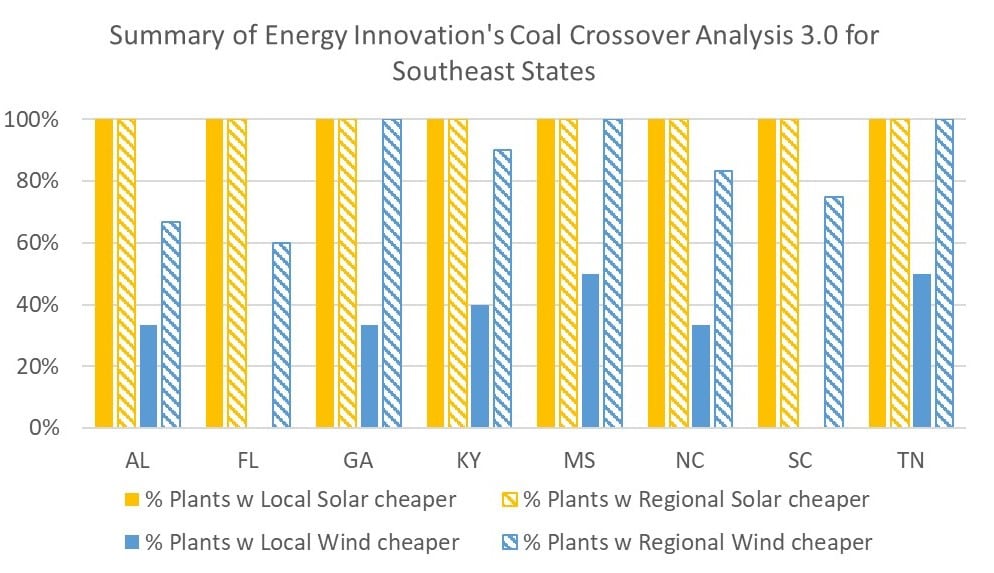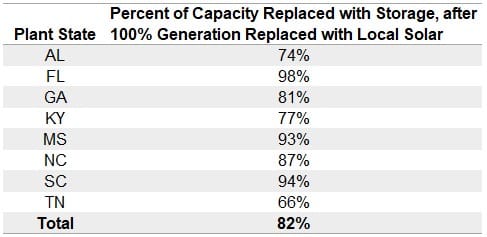Analysts from energy think tank Energy Innovation recently published a report showing that it is now more expensive to continue to run most coal plants than to replace them with renewable energy. Let’s dive in to see what this Coal Cost Crossover analysis can tell us about coal plants in the Southeast.
Energy Innovation included 37 coal plants from Alabama, Florida, Georgia, Kentucky, Mississippi, North Carolina, South Carolina, and Tennessee for a total of just over 53 GW of coal capacity. Of these plants included in the analysis, both local and regional solar resources are less expensive than all of the coal plants analyzed. Notably, in the Southeast where wind resources are often dismissed, local wind was found to be less expensive than 30% of all Southeast coal plants and regional wind was found to be less expensive than 84% of all Southeast coal plants.

In addition to looking at replacing generation with wind or solar, Energy Innovation looked at pairing local solar resources with battery storage to replace some or all of the capacity of each coal plant without costing more than the continued operation of the plant. So basically using the savings from switching from coal to local solar to add storage to make the grid more resilient. The results for the Southeast make it abundantly clear that solar and storage is a cost-effective and resilient replacement for retiring coal plants across the region. In fact, 82% of the total coal capacity in the region could be replaced with solar and storage for the cost of continued operation of those coal plants, and with a significant decrease in risks associated with fuel costs, outages from extreme weather, and potential future environmental regulations.

Does this mean we can just turn off all of these coal plants tomorrow? No, of course not. This analysis compares a simple metric, the cost per megawatt-hour (MWh) of generation, from existing coal plants and new wind and solar plants. But this result is indicative of what should be on the table for each utility’s next resource plan. The Integrated Resource Plan (IRP) process, when done well, is the best tool the electricity sector has for comparing the utility’s overall system costs across different portfolio options. One portfolio would be to continue to operate these coal plants, and another would be to phase them out while replacement generation and capacity from solar, wind, and storage come online. Unless the utility can put its finger on the scale, this analysis indicates the portfolios where these coal plants are phased out should be less expensive than ones where these coal plants continue to operate.



